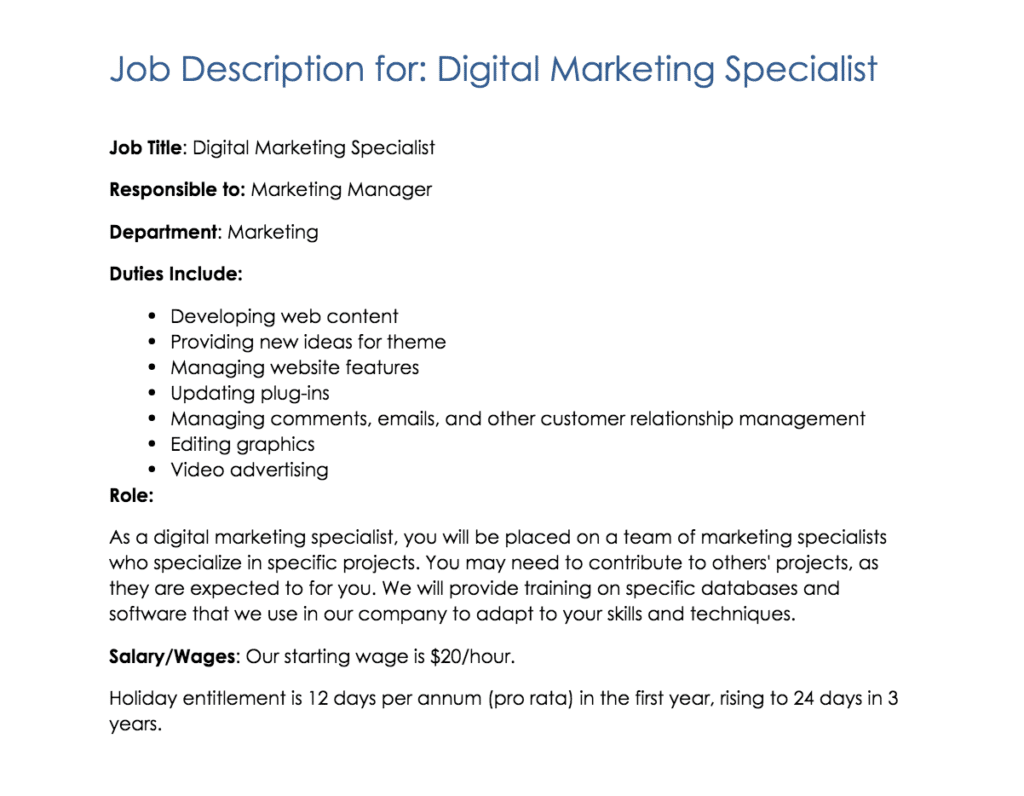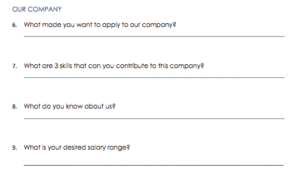Building your Dream Team » Talent Identification
Talent Search
Keep in mind that not all job descriptions are set in stone. The idea is to have your employees grow within the job and have a mutual relationship.
Look at the following example for a Digital Marketing Specialist.
 Job descriptions typically include:
Job descriptions typically include:
- Specific tasks
- Purpose of tasks
- Responsibilities
- How the employee’s role affects the department/company
- Qualifications
- Location
- Certifications/licenses
You want to be specific enough to limit the amount of people that are eligible to apply, but broad enough to have applicants. There is no perfect person.
The Importance of Your Network
Social Media
Your Employees
Identifying Qualified Talent
Click to Download: Phone Screening Interview
Selecting From Your Pool of Resumes
Going through hundreds of applicants is a tedious task. Organize the prospects in different categories, or by your own preference (if the application was done online, this will be easier to do on a spreadsheet). Depending on the website you use, you can set up different categories based on whether they have licenses, their education level, their years of experience in the industry, etc. Basically, you don’t need to interview 50 people to find a good candidate.
Typically, a recruiter should select 10-15 people for a phone interview. As you review over the pool of applicants, keep in mind the initial criteria you had set for this position. This person may be a star-employee on paper, but may be wrong for the job.
Hint: Have your needs assessment in front of you when you are screening and interviewing potential candidates.
Phone Screening Interviews
The next step in finding the right talent for your company is to call and screen the candidates. The purpose of calling, rather than meeting, is to see their initial responses and how enthusiastic they are about this position. When filling out the answers on our Phone Screening Interview tool, ask the questions from your point of view and then record their answers on the paper.
This step also saves time and effort on both parts. From the employer’s point of view, interviewing 5 people in person is better than scheduling time to interview 30 people. Each phone interview should only be about 30 minutes max.
The Phone Screening Interview template is specifically created to be broad. The phone interview is just to see if you like the person.
 One thing we’ve found helpful during phone interviews is to test them if they really care about the interview… Have they done their research? You don’t want the candidate that just applies for every single job without doing their own due diligence. This is a major indicator that they are not likely to stay for long.
One thing we’ve found helpful during phone interviews is to test them if they really care about the interview… Have they done their research? You don’t want the candidate that just applies for every single job without doing their own due diligence. This is a major indicator that they are not likely to stay for long.
Feel free to add in fun questions to throw them off. Questions like “if you could be a huge mouse or a tiny elephant, what would you be and why?” are useful to see if they are creative and can tell a story.

